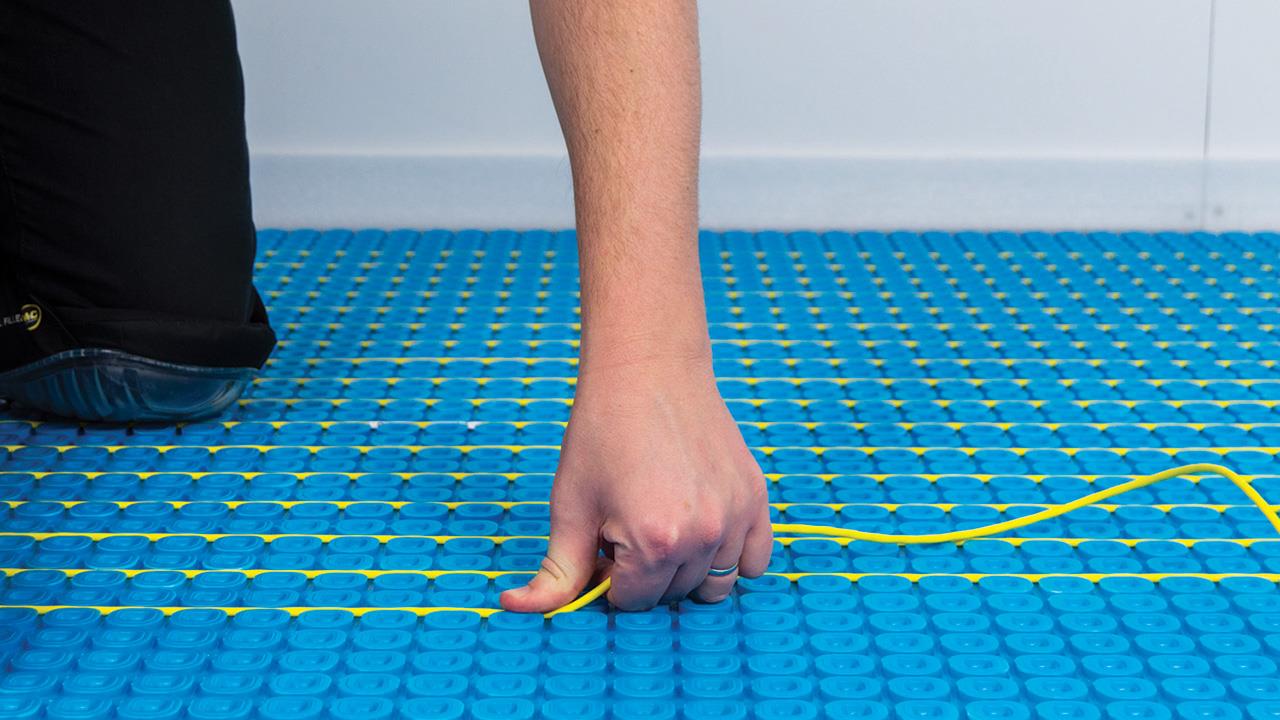

It’s a fact of life that M&E professionals are often caught in the middle of competing demands, having to balance aesthetic demands from clients with building regulations like the Future Homes Standard. Then come the price demands from contractors and supply chain availability; two factors that have become increasingly pressing.
On top of this, everyone must keep up with ongoing changes in sustainability measures while working with the new technologies being introduced to the market. Little wonder that many M&E professionals are turning to low carbon, direct electric underfloor heating as a way of dealing with these competing demands.
Push towards direct electric
Sustainability requirements are coming from two directions. On one side, commercial and residential customers are making more environmentally-conscious choices. According to Savills, the UK saw residential demand for solar technology increased by 10% in 2022, with some manufacturers, such as Solarsense, reporting a 400% surge in commercial demand.
On the other side, building regulations are slowly creating pressure to ensure homes are better insulated and use low carbon heating methods. The 2022 changes to Part L of the Building Regulations will soon come into force and stop newbuild properties from using carbon intense heating, such as gas.
To deal with the regulatory demands, M&E professionals must start adopting low carbon heating methods if they are not doing so already. Last year, a record-breaking 40% of the UK’s electrical energy mix came from renewables like solar and wind, according to the World Economic Forum.
Electric underfloor heating is one of the least carbon intense forms of heating available. As the 40% figure increases toward 100%, in line with the UK government’s 2035 goal, electric heating will become increasingly greener.
Familiar solutions needed
The new Part L of the Building Regulations means that electric heating in newbuilds will only be achievable with heat pumps, or direct electric heating combined with solar photovoltaic panels.
Solar panels are now a familiar technology that requires no upskilling and can save money for the end-user overall. As we see a growing number of commercial properties converted to residential, the retrofitting of solar energy sources adds an attractive sustainability dimension.
Smaller property retrofits need space saving solutions. According to findings featured in our Working Toward Net Zero report, low carbon electric underfloor heating is considered the best option for smaller, multi-storey properties by 54% of the construction sector because it is space saving and easy to install.
Skills shortages require fast action
An additional challenge facing the M&E profession is the glaring skills shortage for heat pump installation.
To meet its low carbon aims, the government is committed to see 600,000 heat pump installations every year by 2028. The Energy and Utilities Alliance has estimated that to meet governmental demand, the number of heat pump installers needs to grow to 140,000 by 2028. That involves upskilling 55,000 existing boiler installers and training 87,000 new heat pump installers.
Low carbon, direct electric heating, such as underfloor or panel heaters, require no large-scale upskilling at all and the existing workforce can easily install such systems.
Electric panel radiators need only to be hung and connected to a power outlet. Many underfloor electric heating systems can be rolled out like carpet and require no special skills. That said, a Part P-registered electrician will be required to check the electrical load of the system and make the final connection to the mains.
All in all, however, the ease and speed of installation does mean that low carbon, direct electric underfloor heating can help to keep projects on time and under budget.
Price rises
The Energy Bills Support Scheme comes to an end in June 2023, and prices across the UK are continuing to rise with inflation in other areas of the economy.
Residential customers are looking for cost effective solutions – tradespeople can use this change of priorities as an opportunity. By using a technology that is easy to install, like direct electric heating and underfloor heating, installers don’t need to rely on subcontractors, and can contain costs.
Effective insulation makes underfloor heating 50% more efficient, which results in less energy used, less energy wasted, and energy costs being reduced. According to research by ThermoSphere, improving insulation is the construction sector’s most effective method of improving efficiency in homes.
If you'd like to keep up-to-date with the latest developments in the heating and plumbing industry, why not subscribe to our weekly newsletters? Just click the button below and you can ensure all the latest industry news and new product information lands in your inbox every week.